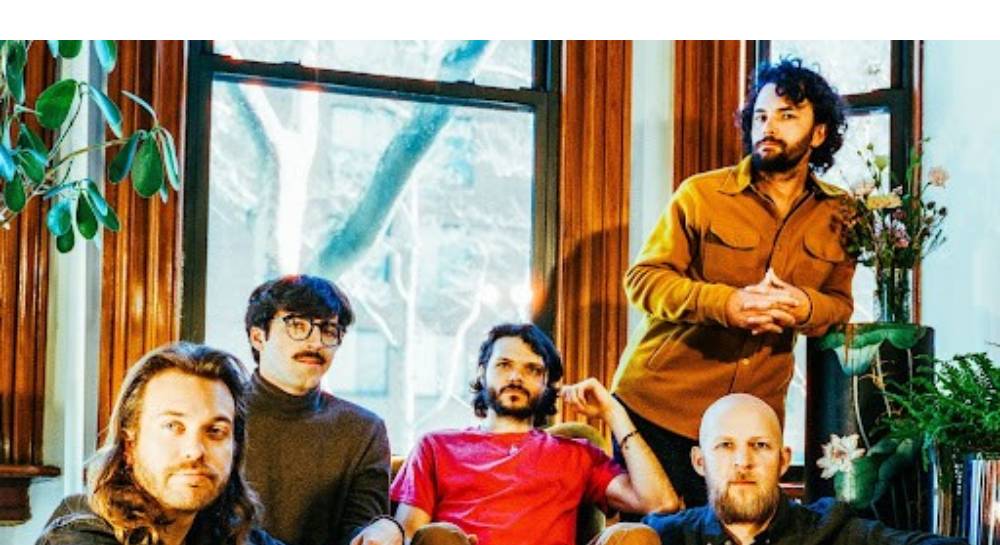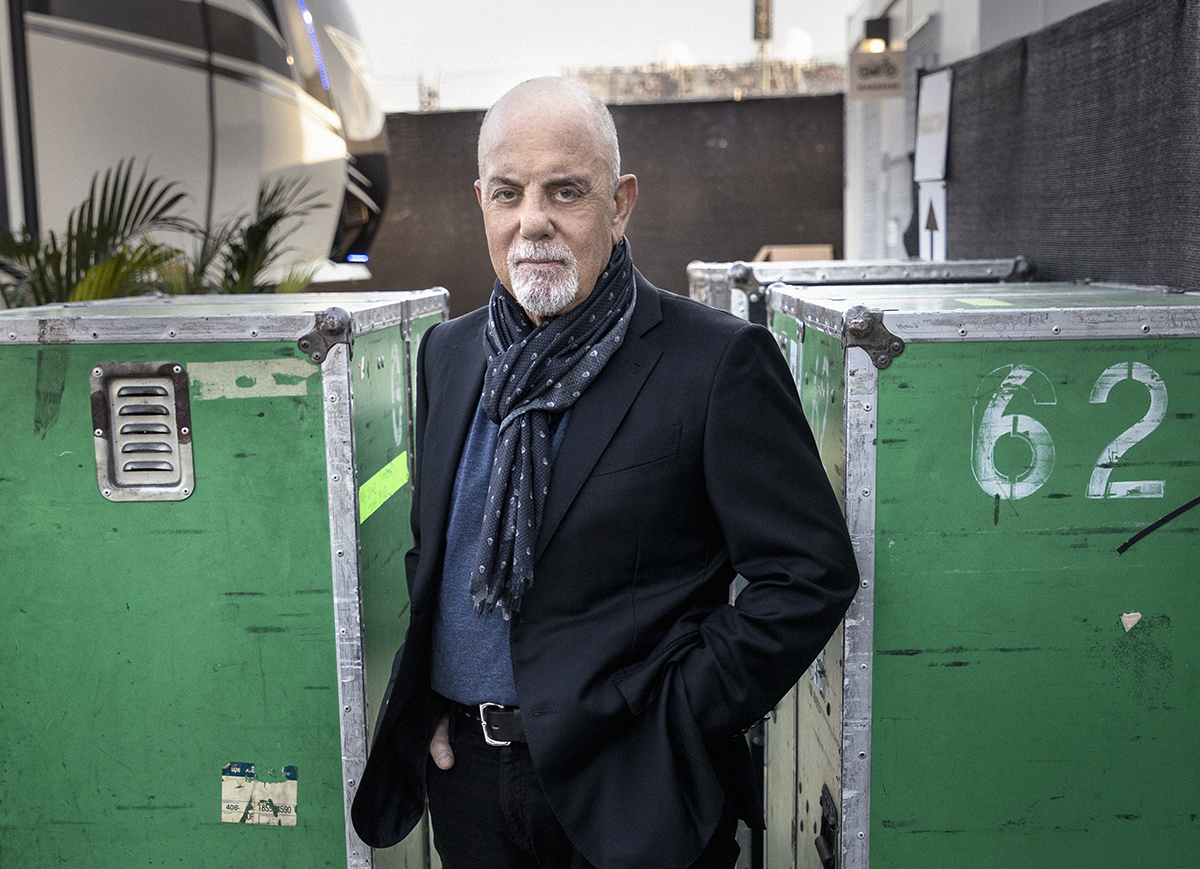This week In the Hot Seat with Larry LeBlanc: Jennifer Brown, CEO, Society of Composers, Authors and Music Publishers of Canada.
Jennifer Brown has been a songwriter/publisher advocate since nursery school.
As music industry collectives and societies worldwide are expanding services to better provide a broader array of music collections to their publishers and songwriters as innovative one-stop shops, the Society of Composers, Authors and Music Publishers of Canada (SOCAN) tapped her to be its CEO in June 2021.
Brown had held an interim CEO role since April 2020.
She is the first woman to lead Canada’s largest music and visual arts rights organization, as well as the first to be appointed to the role from within the organization, and the first with striking ties to the artist and songwriter communities in Canada through her birth.
Brown started at SOCAN in 1995 as a representative in the company’s membership department. Previous to her new position, she had been SOCAN’s senior VP, of Operations since 2018, overseeing SOCAN’s Distribution and Licensing departments, along with its Project Management Office. Prior to that, she spent 6 years as VP of SOCAN’s licensing department, starting in 2008.
Among Brown’s SOCAN achievements are: Guiding the licensing department to record-setting revenue results; overseeing a restructuring that led to the introduction of new, and innovative customer-facing tools; and piloting SOCAN’s reproduction rights presence.
SOCAN represents more than 175,000 songwriters, composers, music publishers, and visual artists as direct members while licensing over 100,000 organizations to play music in Canada.
SOCAN has changed greatly over the past year. There’s a revamped executive team, new Board members, and changes with staff. A lot of new faces.
There are a lot of new faces. We have 6 new Board members (in all 18) that came on with the recent AGM (Annual General Meeting on July 13th, 2021), and on the exec team, we have a lot of new faces as well. Some of them are long-term industry people like Jean-Christian Céré (as Chief Membership Officer), and Vanessa Thomas (as VP, Member & Industry Relations); and (Head of Strategic Solutions & Analytics) Alan Triger who came from Warners (having a 26-year tenure with Warner Music Group, culminating in being Senior VP, Research & Analysis). I am really happy with the new team. It is a flatter structure, and it is a team that is incredibly passionate about our members, and making things work for our members. I love the new energy. I can say that, yes.
(The new SOCAN Board members are: songwriters David Bussières, and Rhonda Head; and Canadian music publishers Diane Pinet, Bloc-Notes Music Publishing; Jennifer Beavis, BMG Rights Management Canada; Daniel Lafrance, Éditorial Avenue; and Mark Jowett, Nettwerk Music Group.)
Being that you were VP of licensing for 6 years, and then senior VP of Operations and Reproduction Rights for 5 years…
I think it was in 2008 that I was on the licensing operation side.
Can you recall any frustrations in either of those positions? In that you might say, “When I’m in charge, I’m going to do this.”
I think it was seeing the culture, and listening to the frontline staff. It’s not just the passionate execs, but we’ve got a team of 275 people who are here to do a job which is to serve our members. Even the note that went out last week about how much we got out in royalties, I think that is more important than what we bring in on revenues because when I ran licensing it was very obvious to me that the folks that are picking up the phone every day, and calling the bars, and calling the restaurants, they are not doing that to get a budget or to hit a target. They are doing that to get money out the door (to members). We are just a “pass-through” (organization). So we want to make this is an organization that is listening to our members and is there for them, and that also is meaningful for our employees too. That they know that what they are doing has an impact. They want that, and they deserve that.
You started at SOCAN when?
I started in ’95 working for Lynn Foster (Director Member Relations). I met her. My dad (songwriter Barry Brown) was doing a Songwriter in the Round at Canadian Music Week. I was at Ryerson (then Ryerson Polytechnic University in Toronto), and I just asked to come along, and work here for the summer.
What were you studying at Ryerson?
I was taking business management.
Looking to do what type of career?
Work in music. Always to work in music.
Really?
Yep, yep.
Of course, like so many people, I know your entire family. I knew your grandfather, and I know your dad and know your aunts. You were raised in a celebrated, highly successful Canadian country music family, the Browns. Did you ever think that that you’d be a performer as well?
No. I would have loved to if I could. My dream would be to be a songwriter, but I’m just not that talented. I have always been pushed more to the mechanics of it (making music). I’m not a performer. I do the background (business) and I know how things work.
(The Ottawa Valley country group the Family Brown was formed by family patriarch “Papa” Joe Brown, a former member of the Hillbilly Jewels and the Happy Wanderers. The group also featured his son, Jennifer’s father Barry as vocalist, songwriter, and guitarist; her aunts, Lawanda, and Tracey who sang backup; its manager of 23 years, drummer Ron Sparling; and Tracey’s husband, producer, and bassist Randall Prescott.
Inducted into the Canadian Country Music Hall Of Fame in 1997, the Family Brown charted 42 singles, 19 Top 10 hits on Canada’s RPM Weekly country chart, as well as 7 singles on Billboard’s Country chart in the ‘80s.
They won the Canadian Country Music Association’s award for Group Of The Year 7 times in the 1980s. Additionally, they were named the CCMA’s Entertainers Of The Year in 1982, 1983, and again in 1986. They won three Juno Awards for Country Group of the Year.
The Family Brown also hosted their own TV series, “Call It Country” renamed “Country Way,” and “Family Brown Country” over 13 seasons.
In the late 1980s, Barry, Tracey, and Randall formed Prescott-Brown & The Lonesome Daddy’s, later renamed Prescott-Brown.
“Papa” Joe Brown was inducted posthumously into the CCMA Hall of Fame in 1986, and the Country Hall of Fame in 1989. A street in the Ottawa suburb of Nepean was named Family Brown Way in 1989).
Most of the Family Brown’s chart successes came from songs written by your father Barry. Have you written songs?
Not probably since I was 12 years old. In post-retirement, I might pick it up again. I might try.
Were you aware growing up of being in a family of celebrated entertainers?
I don’t think I was because it was something that I just lived in. I didn’t know any differently. It’s funny because when I started at SOCAN it was like I knew what a music publisher was. I knew what a radio tracker was. That was just part of the vocabulary around me and part of the network of people that I met. So I don’t think I realized how special that was until much later.
I bet you knew the exact day that the music publishing royalty deposits came in.
I knew when royalties came in. I knew what CAPAC stood for. I don’t know what it would be like to grow up any differently. I am very grateful for that.
(Composers, Authors and Publishers Association of Canada (CAPAC) merged with the Performing Rights Organization of Canada (PROCAN) to form SOCAN in 1989.)
You are the first woman head of a performing rights collective in Canada. BMI Canada and its predecessor PROCAN as well as CAPAC were heavily male-dominated as was SOCAN until, perhaps, five years ago.
Yes. It was. There was a long time where there were a lot of woman at SOCAN. We were probably always about half, but not equally distributed amongst all of the levels.
There is one major exception, Betty Layton of BMI Canada, one of this year’s 24 visionaries recognized with the SOCAN Guardian Award in May for their roles in boosting Canadian content nationally and internationally. While Harold Moon was appointed managing director of BMI Canada, an affiliate of BMI in the United States, in 1947, Betty joined him as his second in command in 1948 at a salary of $18 a week.
(In 1976, BMI Canada changed its name to PROCAN – the Performing Rights Organization of Canada – and Moon became chairman in 1977, a position he held until his death in 1984.)
Betty played a vital role in the growth of Canadian rights management.
Right. I got to meet her. I used to talk to her. Every now and then, she would come in and visit.
You know Betty virtually ran BMI Canada day-to-day…
Yes, she was definitely the engine behind that. She once told me that when she first started all her work was putting index cards into a shoebox.
A job that I did for Charlie Gall at BMI Canada was identifying songs on cassettes that the staff had recorded undercover at local clubs. He’d give me 20 or 30 cassettes and I had to identify the music selections in order to acquire licenses.
Oh, wow. So they could do the radio monitoring?
No. I identified what the performers were playing in the clubs. Sometimes it would be their own original songs, but often it would be Top 40 songs that had to be identified.
I sat near Charlie Gall when I started at SOCAN. You talk about an education. Hearing him on the phone all day, that was my training ground.
Arts and culture have been an important part of the #BlackLivesMatter movement that started in the U.S. With the continued growth of the #BlackLivesMatter have come several common messages, including the importance of embracing diversity, and accepting people regardless of race, religion, ethnicity, sexuality or background.
Last year SOCAN, inspired by Black Out Tuesday (a day set aside for reflecting on what more can people do for equality, diversity, and fairness) launched a 6-month diversity review with Cultural Pluralism in the Arts Movement Ontario; as part of a goal to create, and foster a more equitable company. An employee-led team next considered equity issues, and then made recommendations for equitable hiring and opportunity practices, training, and awareness from diverse communities.
When you began a career with SOCAN, as a younger woman, you were very much in the minority. Today, more than 40% of SOCAN employees identify as a person of color, and almost 60% identify as female. So SOCAN now has a commitment to greater diversity within the organization, including to minorities and women?
Absolutely. We signed on to the Breaking Down Racial Barriers declaration that happened nearly two months ago (June 2, 2021). We have been working with CPAMO (Cultural Pluralism in the Arts Movement Ontario) over the past year. We just got the report in a few weeks ago that has been presented to our executive team for our next steps. We also have an Equity Task Force in SOCAN, and they just saw the report. So right now the Equity Task Force is going through all of the recommendations to prioritize them. I think the steps that we take at SOCAN are going to be so important, but also how we share those results with the rest of the industry to make sure we are all working toward this, I think is also going to be critical.
SOCAN’S 2020 financial results, announced this month, were most impressive, especially with the COVID-19 pandemic impacting live music in Canada. A tally of $391-million in total revenues, only a 4% revenue decline from 2019.
Results include more than $348-million in royalties distributed to the company’s 175,000 members, a 10% year-over-year increase; a 20% increase in revenues from digital sources; a 10.5% year-over-year increase in international royalties for an all-time high of nearly $100-million; collections from digital sources to a record $104-million at an average annual growth rate of 32%; and more than $11-million collected for reproduction rights.
Meanwhile, gross expenses were cut by 4% which likely offset some of the revenue lost from concert revenue. So that helped.
It did help. Absolutely, and I think that one of our bigger wins was the almost $100 million in royalties coming from foreign sources which just speaks to the incredible talent of Canadian writers around the world. We have it at $100 million in the press release, but it was $99.95 million. We were like, “We are so close.” But that was a record, that we didn’t forecast for. It was such an amazing thing.
That speaks not just to the depth and popularity of Canadian songs, but to the expanse of distribution available today through digital sources. Two decades ago, the international distribution of Canadian music, resulting in use abroad, was a protracted process with unpredictable results, including capturing revenue streams.
How do you explain SOCAN adding more than 7,500 new members in 2020, one of the largest years of membership growth in the organization’s history? I’d suggest that the combination of the pandemic, an increase in home studios, new recording technology, expanded internet-driven distribution, and a growing and increasingly ethnically-mixed population from strong international migration that has lifted Canada’s population in such markets as Toronto, Montreal, Calgary, and Vancouver, may all be having an impact. Nevertheless, that is astounding growth considering there are only 175,000 members.
I agree. It is usually only about 5,000 members a year that come on. I don’t know if it was the pandemic, and everybody got back to their passion of writing music and trying to figure out how to get the music out there. I do know that our A&R team was fully engaged. Without being on the street, they still stayed in close touch, either through Song Camp or a lot of different panels, and reaching out one-on-one. I think as you were saying to begin with there are a lot of people at home making records over the past few months.
Whereas musicians might not have had industry access previously because they had to record in a studio. be signed to a label or production company etc, nowadays, those steps have been eliminated, and they have greater access. Today, an emerging artist or songwriter can directly pitch their music globally through existing streaming services, and social media sites.
As a result, there is now a more diversified talent pool coming to SOCAN that might not have considered joining a few years ago.
Yeah, you are right. The whole global market is there at their fingertips. That is an interesting perspective. And, of course, making sure that we are working with all of the (international) collectives, and getting that money out. There are big things that we have invested in as well.
Today a hit can come from anywhere, and translate everywhere. All countries must be considered global A&R centers, capable of producing worldwide hits and stars.
Among those Canadians happening internationally now are: The Weeknd, Drake, Shawn Mendes, Justin Bieber, Alessia Cara, Tate McRae, Alexandra Stréliski, Elisapie, Frank Dukes, Hubert Lenoir, Keith Power, Loud, Murda Beatz, WondaGurl, Tanya Tagaq, Powfu, Curtis Waters, and Charlotte Cardin. Many of these weren’t showing up two years ago.
That’s a good point. Yep. This is something that I really hope that we can keep contributing to make sure that Canadian talent can still thrive. Making sure that we’ve got publishing here that can support those new writers and, of course, the rest of the industry.
The $99.95 million coming in from foreign sources is so meaningful and possibly might just jolt people who remain myopic about this business in that they keep thinking of being U.S.-centric. Yes, the American market is the most valuable monetary market, but there are many songs where half, or more than half of the income, comes from overseas.
Rightsholders do need to know the rules for the uses of their music outside of Canada. Many still are unaware of how collection societies outside of North America work, what figures that they take off the top, or their social or cultural deductions.
At the same time, these collective societies, and rights societies outside North America have greatly evolved. Today, there’s greater transparency in dealing with the likes of GEMA in Germany, PRS in England, SACEM in France, and APRA AMCOS in Australia and New Zealand.
I do believe that the baseline has definitely lifted. There’s the expectation that we all need to be delivering to keep the PRO (performing rights organization) network strong. I think that there is still a delay sometimes in managing queries, but those are things that we are working on. But definitely there is better information flowing as far as the distribution.
What about China? Goldman Sachs projects that China will have almost 250 million paying music subscribers by 2030. While a huge amount of money is now being generated around music there, it is not all recognized at a licensing level. One of the ongoing difficulties with Chinese copyright law is that, although it enumerates the rights comprising copyright, it does not clearly state which rights apply to which copyright works or other subject matter.
With China, I don’t think we are quite there yet. People are really trying to make sure that this is working, right? That we can be there, and help support, and make sure that money is coming out. There’s a lot of population there, and with streaming, there could be big dollars coming out of there.
Do you study the royalty patterns of SOCAN’s top international earners to figure out the potential of markets? Obviously, SOCAN representatives attend international conferences and travel to many of these markets in order to identify their potential.
Yes, our international (department) keeps up relationships, and also does that analysis of comparing by market size who is paying us, and who is below where we think they should be, especially when it comes to those big songs.
Until 2014, SOCAN had nobody strategically positioned overseeing international markets, but since then international revenue has increased 100%, moving from the 4th largest source of revenue for SOCAN to the first.
Yes, Catharine Saxberg (VP International Relations) is the head of international. She has a team building those relationships. The team also has a manager of international relations, Connor Chapman. He is so data-driven. So it’s that magic between relationships, but also understanding the data, and where we should be in receiving royalties.
The rise of digital entertainment distribution placed new demands on SOCAN, and a transformation within the organization took place against the backdrop of declining mechanical revenue caused by a drop in recorded music sales.
(The company recently created a Strategic Solutions & Analytics Team with Alan Triger as its head. The group has a mandate to develop new digital products and services for SOCAN members, licensed businesses, employees, and other stakeholders. The team will also manage existing projects, such as the company’s new Member Portal.)
The COVID-19 pandemic created a perfect storm for livestreaming, and many artists have been simulcasting on YouTube, Facebook, Twitter, or Instagram. Still, livestreaming isn’t monetized. Artists are mostly performing for free to gain exposure.
While streaming has become more widespread and has become an integral part of changing the digital frontier, music viewership continues to evolve through Facebook, Instagram, LinkedIn, TikTok, Twitter, Zoom, Twitch and Triller.
I agree with that, and I do think that and see TikTok and all that coming through. “I can just record this and put this out right now myself.” So that accessibility is even greater than Spotify and Apple or CD Baby. “This is just on my phone right here.” And there have been some big breakouts on TikTok
TikTok reportedly has more than double the number of active users worldwide than Spotify. It is estimated that TikTok has 800 million monthly active users worldwide as of July 21, 2021, and will surpass a billion over the next year.
A new report from TikTok and MRC Data reveals that 75% of TikTok’s U.S. users say they discover new artists via the platform.
(Assessing TikTok, Sarah Perez wrote in TechCrunch in 2020: “A new study on kids’ app usage and habits indicates a major threat to YouTube’s dominance, as kids now split their time between Google’s online video platform and other apps, like TikTok, Netflix and mobile games like Roblox. Kids ages four to 15 now spend an average of 85 minutes per day watching YouTube videos, compared with 80 minutes per day spent on TikTok. The latter app also drove growth in kids’ social app use by 100% in 2019 and 200% in 2020, the report found.”)
TikTok’s singular importance to our industry has been in building artists careers during a time when live music and touring were virtually non-existent.
Among Canadians launched via TikTok exposure have been Tate McRae, Powfu, Curtis Waters, rapper bbno$ (pronounced “baby no money”), Ali Gatie, Kristen Hancher. Vivian Hicks, Helena Bruder, Jennifer Tran, Kaylin Gries, Aaliyah Mendes, MaximeB, and Jayda Vallance.
In June, Avril Lavigne made her TikTok debut and employed the help of real-life “Sk8er Boi” Tony Hawk.
(Through TikTok, fans discovered Curtis Waters’ song “Stunnin’” in early 2020, and paired it with their own videos, catapulting it to millions of streams. As well, Vancouver’s Powfu (Isaiah Faber), and Calgary’s Tate McRae both emerged in 2020 due to their TikTok presence. McRae’s “You Broke Me First” peaked at #16 on Billboards Global 200 chart, and pulled in over 630 million Spotify streams, while Powfu’s “Death Bed (Coffee for your Head)” peaked at #23 on Billboard’s main chart, and is pushing one billion streams.)
In June 2021, the CMRRA (Canadian Musical Reproduction Rights Agency) signed an agreement with TikTok for the collection of digital mechanical royalties in Canada, delivering a new revenue stream for music publishers and self-published songwriters.
Is a TikTok agreement coming with SOCAN?
The Facebook group and everybody else, they are licensed. We don’t have TikTock licensed yet, but we are in agreement with them.
Agreements have been reached which allow Facebook and Instagram users to post 15-second snippets of songs in their stories, right?
It is in their agreements that they can post 15-second snippets of songs but because we have the blanket license on the performing rights side we are not receiving payment per performance. We are receiving royalties on the number of subscribers, and the revenues that they bring in.
These kinds of all-in rights agreements hadn’t existed in Canada before the SOCAN alignment in July 2018 with the Montreal-based mechanical rights organization, the Society for reproduction rights of authors, composers, and publishers in Canada (SODRAC)
Major digital organizations like Netflix and Facebook now benefit with them licensing both reproduction and performance rights with SOCAN.
However, last year, the Federal Court of Appeal dealt a blow to SOCAN when it ruled that songwriters are not entitled to a two-tier payment model. SOCAN argued that composers and publishers should be paid once when a song is made available on a platform — such as Apple’s iTunes or Spotify — and a second time for each instance of their work being downloaded or streamed.
Is SOCAN appealing that decision?
We are going to the (Canadian) Supreme Court very shortly. Our general counsel and our legal team have been hard at work on our submission. That has been a long fight.
Where is SOCAN in negotiations with Netflix for a reproduction rights deal?
Netflix has been licensed for performing rights for years. Under the tariff, actually. We have been in talks with them to get the reproduction rights. We are very close with that. We have been working on a repertoire study with them, and we hope to announce something soon on the renewed PR (performing right), but also the reproductions.
With streaming, music catalogs have been revitalized. Any idea what SOCAN’s catalog revenue share is?
I don’t have the recent numbers, but repertoire is definitely critical. We are so lucky because we are one of the few collectives that still has the blanket license (being granted access to a rights holder’s entire catalogs). We still represent all repertoire in Canada for performing rights which helps so much in the licensing discussions.
While rights have become more complex, SOCAN is now able to drill down more effectively. The acquisition of SODRAC, which brought in nearly 1,000 visual arts and crafts creators to the organization, as well as dozens of new reciprocal agreements in the Reproduction Rights and Visual Arts domains, enabled SOCAN to expand its capabilities and offer an integrated approach to the management of both performing rights and reproduction rights for songwriters, composers, and music publishers.
Yes, and I think that having both rights under one roof does help, especially for songwriters who own their own rights. They should be registering those songs more than once. Hopefully, we can start to build out our lead reproduction rights offerings more effectively. We want to look at that drilled down, and make sure that everybody fully sees what they are getting on their digital statement, and the AV broadcast mechanical (which applies to both traditional broadcaster and those who offers content on the internet) we think is a key element for folks as well. We have Martin Lavallée (Senior Legal Counsel, and Head of Reproduction Rights.) who is now really helping us with this.
Martin was with SODRAC in Montreal for over 13 years as Director, Licenses and Legal Affairs.
I love the market in Quebec. It is such a family. The support of their creators is something spectacular. In the Quebec market, there are so many people there that keep their rights, even for audio-visual on the reproduction side. How can we help break that into the rest of Canada in the English market?
The learning curve that came with SOCAN’s acquisition of SODRAC was considerable. What came with it was the integration of the management of public performance rights and reproduction rights leading to not only cost efficiencies but a new structure to leverage licensing arrangements with a varied set of clients such as broadcasters and music streaming services.
You must have learned from the experience in how SODRAC deals with the mostly French-speaking market of Quebec?
Hundred percent yes. there was a lot of learning that we needed to do. We couldn’t just go in there and say SOCAN processes apply here now. There is a different marketing to that there. There is a different reproduction rights market, especially how many publishers have the collective flow the royalties through to the writers directly. That’s a big difference. The status of the artists, and the reproduction rate on AV. Then the sync market is very different, as well. So there was a lot of learning. There’s a lot of experienced and knowledgabe people that got to come over. Yeah, it was definitely not, “PR is the standard here.” Certainly, reproduction rights has its own nuances, and those need to be really understood, and be really respected.
At one time, dealing with the use of music was a lot easier for performing rights organizations. It primarily consisted of brokering tariffs for radio, TV, and live performance, among other things.
New uses of music changed the way SOCAN had to do business and led to the purchases of Audiam, Dataclef, and MediaNet as well as SOCAN becoming co-owners with Re:Sound of the music licensing organization Entandem.
SOCAN first made a foray into mechanical rights collections through its acquisition of US-based Audiam in 2016. Audiam marked SOCAN’S entry into new rights. It started off with YouTube monetization and then moved into digital reproduction rights, which has provided SOCAN with a view of different markets, especially the U.S. reproduction rights market.
Dataclef Suite—with its multi-right, back-office licensing and royalty technology tools—has incurred losses of $28 million since 2016. Isn’t it actually just an extension of SOCAN’s technology already in place?
It was the Dataclef piece which was really a few pieces of that. We had acquired MediaNet, and Audiam and that built out the Dataclef Suite which was really supposed to be almost a collective in a box. So the acquisitions that happened back in 2016, there were investments that we needed to make, and that was those companies. The reason that we started changing our strategy last year, and we sold MediaNet, was because we didn’t want to do the further investment. We wanted to invest in our systems to make sure that we were really serving our members.
A change in strategy came about from pressure from the Board.
The Board definitely did not want to further invest. That is something that they were adamant about, yes.
There had been a distinct international strategy at SOCAN for a decade under your predecessor. For example, providing specific leadership to CISAC (the International Confederation of Societies of Authors and Composers) with its 227 member collective management organizations in 120 countries, effectively positioning SOCAN as a leading international player.
(Eric Baptiste, SOCAN’s former CEO, resigned on April 14th, 2020, after more than a decade of leading the organization. With the end of his contract approaching, Baptiste said it was time to move on, and a mutual decision was reached with the Board to end his tenure.)
I take it that strategy has been pulled back? That SOCAN will continue to have global partners, but no longer is seeking to be in such a visible leadership role?
Being a global leader is definitely a SOCAN strategy. I do want to be that leader, that kind of beacon of how we should be serving members, and how to keep collective management strong in key territories. I want a strong Canadian market, and I think that needs an effective collective to be part of that. So I do think that there is a leadership angle there.
I do think that our strategy, and the new team’s strategy also relies a little bit more on looking at partnerships. The first thing that I did (in my new position) was to reach out to the association so that I made sure that I fully understood their needs and expectations. I also think about that global network. I look at the Australians. They have such a similar market. So we have sharing meetings with APRA AMCOS all of the time, “Okay, what are you doing? What are your challenges?” We are all facing a lot of challenges. Do we all need to invest the same amount of money to address those challenges or can we work better together?” That is something that we are trying to work out as well is how to be partners in the industry.
One successful collaboration was becoming co-owners with Re:Sound in the music licensing organization, Entandem.
Yep. It is unfortunate that we launched right before the pandemic hit, but I totally agree that it has been a great success, and SOCAN is figuring out how to make it easier on the licensees.
From a licensing perspective, it didn’t make sense for a SOCAN rep to be walking into a bar collecting a performing rights license and then have a Re:Sound rep walk into the same bar to obtain a performance license.
We still own our own rights. We still can enforce our own rights. But at the end of the day if you are a restaurant owner having us come in for the performing right and Re:Sound come in for the performers right, this make a lot of sense.
Rights issues are confusing for both those working in music, and for licensees. At one time, digital services argued that if they had to pay royalties for music, it would put them out of business. There was not necessarily a clear understanding of the consequence of that use; that they had to have a license. That they had to pay somebody for the use of the music. That they knew who they had to pay the royalties to.
There has definitely been the narrative for a lot of services that, “We pay so much money. We don’t know where it goes.” “No, we will tell you where it goes, and how we get it into songwriters and publishers’ hands.” We really want to make sure that that is demystified so it doesn’t get under the narrative of a complex “No need to pay attention here.”
Interactive streaming services like Spotify, Apple, Amazon, Pandora, and Google have taken control of music delivery and marketing away from the labels and artists by controlling the distribution process. The trade-off was that the giant recorded music companies wrestled meaningful equity stakes, and revenue sharing conditions out of Spotify, Apple, and other streaming services which arguably started to replace revenue the labels made from the loss of CD sales, and digital downloads. Meanwhile, the publishing sector has had to fight tooth and nail for a seat at the table, and their revenue split to this day is hardly proportional to what the labels receive.
Not, it’s not at all. One thing that we have really tried to work on is making sure that the government understands, “Look the publishing share, the composition is getting in the 15% range. This is what we do to make sure that it gets in the songwriters and the music publishers’ hands.”
The services use recorded music at the expense of the songwriters and independent publishers because the recorded music companies, Universal, Warner, and Sony, are leveraging their publishing companies. They can’t be advocates like independent publishers because they are answering to the interests of their recorded music divisions.
Right, right. I think it’s fortunate that we have really forward-thinking publishers on our Board, who do want to do what is right for the composers and the songwriters and to make sure that we are getting good rates here. So I have been lucky that way.
Canada is renowned for having fierce copyright advocates.
We do. Publishers have held strong here to make sure that Canada is its own market. I don’t know the ins and outs of their agreements, but when you listen to most of the publishers here, they are writing songs too. That they have that other foot in, and they are so close to the Canadian songwriters that they represent.
Has the online live-performance Encore initiative been replaced with a new digital platform also covering reproduction rights? SOCAN launched Encore in May 2020 but expanded its online performance royalties program in March so members are now able to receive performance and reproduction rights royalties from free and ticketed online concerts on digital platforms for one-time live digital broadcasts.
No, we are still licensing Instagram and Facebook concerts, and getting those distributions out for online concerts. But we have also been working with the publishers and the CMMRA on developing a new online concert license that we are still working through and hope to launch this summer. We are working with a lot of industry folks to make sure that it is completely understood how it would work. This is another good partnership opportunity.
(For qualifying free online concerts, including those on Facebook Live, Instagram Live, YouTube, and Twitch, $75 is being distributed by SOCAN to acts supplying setlists to a maximum of 30 concerts per quarter per performer. The funds are being distributed to the music creator and publisher rights holders of the music performed. More digital platforms will be added as they become licensed with SOCAN.)
A lot of your focus since being senior VP of Operations and Reproductions Rights had been on reproduction rights which has greatly expanded. SOCAN has been collecting international reproduction royalties for a long time through agencies such as Harry Fox Agency and MRI and has now added Mechanical Licensing Collective (MLC) launched on Jan. 1, 2021, as a partner.
In April (2021), SOCAN received its first monthly payment from the MLC for the month of January 2021, which was distributed to SOCAN reproduction right clients on June 15th, 2021.
Our songwriters have moved online, and they need to be paid for those concerts online, and how can we all work together to get that license, but more importantly, get that money out?
In 2017, SoundExchange, the non-profit rights organization that collects the royalties paid by digital music companies for the public performance in the United States of sound recordings, acquired CMRRA which licenses reproduction rights to musical works in Canada.
Five years earlier, CMRRA, SOCAN, and SODRAC had talks exploring an opportunity to create an integrated approach to the management of performing and reproduction rights of music creators and publishers in Canada. A proposed merger fell through. What is your relationship with the new team at CMRRA?
I have a long-standing relationship with Veronica Syrtash, (CMRRA’s senior VP, Business Affairs & Corporate Development). She and I both come from licensing and we are at the table licensing all of the DSPs (Digital Service Providers), the first agreements that came in Canada. So I sat on the same side of the table with her more than I have been on the opposite side. I see huge value in SOCAN and CMRRA working together. The Online Concerts (license) is a good first step. If we want to keep the Canadian market strong, I think that we have to show solidarity in Canada, making sure that people understand licenses are fully in effect; that we are getting good rates here; and that we have the market covered. Anything that we can do to make sure that we are doing that job for our rights holders is a positive step.
With rising vaccination numbers and loosening restrictions, the summer of 2021 is a tale of hope and optimism for the live sector. Theatres, arenas, outdoor festivals, bars, and the like have been dark for so long, and fans and musicians have been awaiting the arrival of the end of lockdowns and restrictions. Still, there continues to be a great deal of uncertainty because the pandemic isn’t over. I’m not sure when live music will return at full force.
I definitely think that it is not going to be a steep incline. It’s not going to be a bounce back. I’m very worried because this (activity) was such a first start for so many songwriters.
It is possible that multi-media targeting is where we are heading in live music. Not only having the live in-person club or concert experience but reaching an audience through multi-media. If a band is performing for 5,000 people at a show in Vancouver, they could be playing via streaming to a million people worldwide at the same time. How a live show will be curated is going to be different than it has been and that is going to put demands on SOCAN to face.
I think that you are right. I think again having those partnerships, and the open dialogue and making sure that we are all ready for that. Being adaptable, right, because our songwriters and our music publishers, they are entrepreneurs. They are going to where they need to go so we need to be quickly adapting and making sure that we are getting the licenses in place to where they go.
Canada’s country music sector is currently faring well with such acts as Dallas Smith, Dean Brody, High Valley, Brett Kissel, Tenille Townes, James Barker Band, the Reklaws, Lindsay Ell, Jess Moskaluke, Tim Hicks, Jade Eagleson, Hunter Brothers, and Mackenzie Porter.
You still a country fan?
I do listen to it. I listen to a lot of different music. I am probably more on the rock side, if there still is rock music. I also have a 6-year-old daughter, so I listen to a lot of pop music too.
Larry LeBlanc is widely recognized as one of the leading music industry journalists in the world. Before joining CelebrityAccess in 2008 as senior editor, he was the Canadian bureau chief of Billboard from 1991-2007 and Canadian editor of Record World from 1970-80. He was also a co-founder of the late Canadian music trade, The Record.
He has been quoted on music industry issues in hundreds of publications including Time, Forbes, and the London Times. He is a co-author of the book “Music From Far And Wide,” and a Lifetime Member of the Songwriters Hall of Fame.
He is the recipient of the 2013 Walt Grealis Special Achievement Award, recognizing individuals who have made an impact on the Canadian music industry.






















